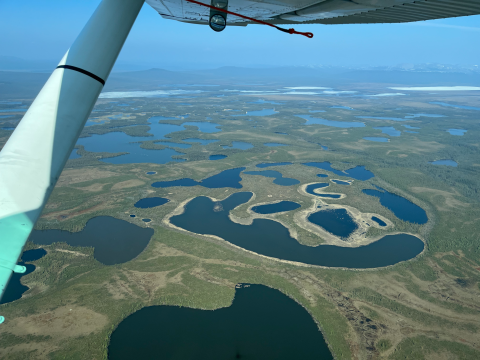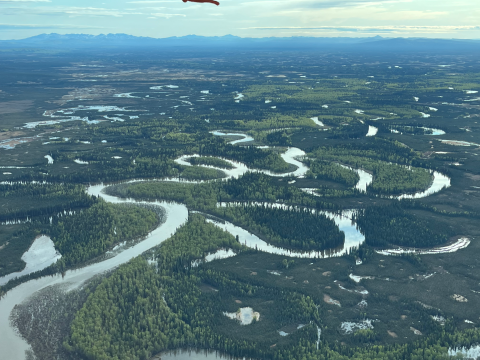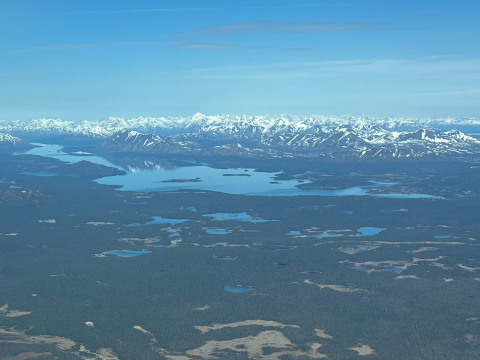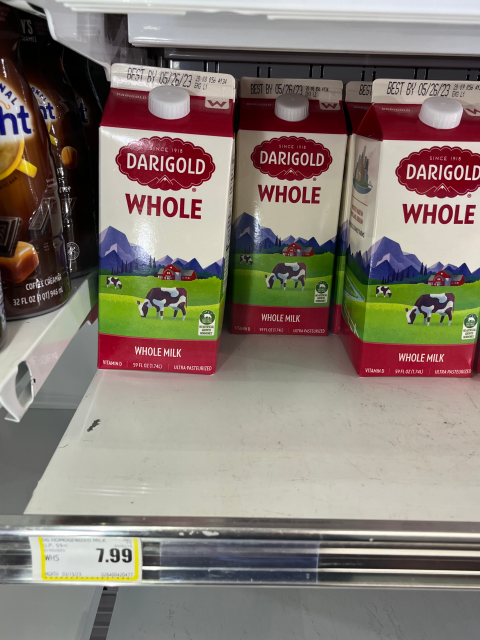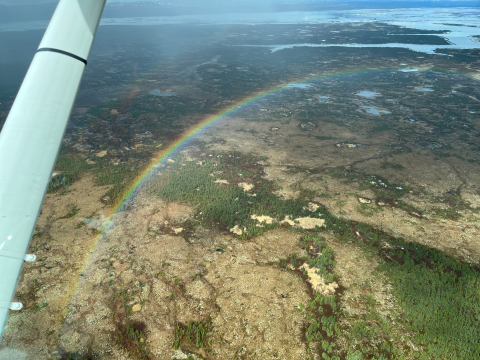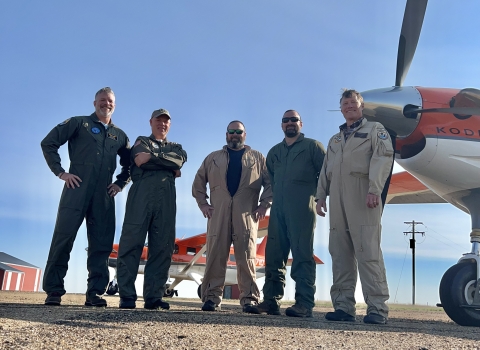When people hear that you are counting birds from an airplane, they want to know…what you are seeing, how are the birds doing, how can you see birds from an airplane, how did you get that job….and how can I do that? All good questions with some answers more complicated than others. Counting birds from an airplane requires a strong stomach, steady inner ear, the ability to spend hours inside a metal tube with a droning engine – and most important of all, a love for what you do. It is equal parts exhausting and exhilarating!
Exploring new places, contributing to our understanding of how bird populations are doing, and connecting people to our natural resources have always been a part of my motivation as a biologist. And the Waterfowl Breeding Population and Habitat Survey checks all those boxes too. Though aerial surveys for birds have been a part of my career for over 20 years, this was my first year counting birds for the May Surveys and I was excited to traverse the great state of Alaska and poke into the Yukon Territory of Canada with my amazing pilot biologist Brett Nigus.
Alaska and the Yukon Territory offer a variety of habitats for waterbirds to choose from including large swaths of boreal forest lakes in the Interior to tundra wetlands of the Yukon-Delta and the Seward Peninsula – there is something for every type of duck, goose, swan, and other waterbirds including loons and grebes.
While Alaska is vast and most of the human population can be found in the big cities of Anchorage, Fairbanks, and Juneau, there are several remote communities that make up the backbone of rural Alaska. And, more importantly for us, these places are a respite – a place to refuel the plane and a place to close our eyes and prepare for the next day – much like a bird on migration. Since these communities are off the road system, supplies must be brought in by airplane or boat and prices reflect this mode of transporting goods. It is not uncommon for half a gallon of milk to cost over $8 with your bread options limited to white or wheat. Though living in remote Alaska may not be cheap, living off the land surrounded by nature makes it worth it for many.
When I am flying over these remote places, I often think that I may be looking at a place that no other human has ever touched and there is something extremely peaceful and grounding about that. Thinking that places out there exist just for nature reminds me that we are merely a part of the bigger picture, and I am richer for the experience. I am grateful and lucky to see the world from high above – a unique perspective that never gets old.


